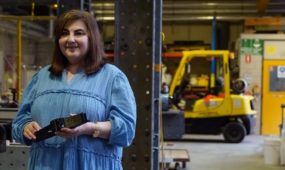Hybrid glass reflects smart potential
Technology
A NEW method of injecting nanoparticles into glass has created potential applications for biomedical engineering and 3D displays.

Sign up to receive notifications about new stories in this category.
Thank you for subscribing to story notifications.
The innovative method was developed by researchers from The University of Adelaide in South Australia, which enables the glass to hold transparency and proceed into various shapes including very fine optical fibres.
Principal researcher Tim Zhao said this new method of injecting upconversion nanoparticles into glass could have multiple applications including remote nuclear radiation sensors, interactive 3D display screens and biomedical engineering equipment.
“For example, neuroscientists currently use dye injected into the brain and lasers to be able to guide a glass pipette to the site they are interested in,” he said.
“If fluorescent nanoparticles were embedded in the glass pipettes, the unique luminescence of the hybrid glass could act like a torch to guide the pipette directly to the individual neurons of interest.”
Upconversion nanoparticles are able to convert near infrared radiations with higher energy emissions or visible light.
They exhibit unique luminescent properties and show great potential for imaging and biodetection assays.
Dr Zhao, a researcher at the University of Adelaide’s Institute for Photonics and Advanced Sensing (IPAS) said previous methods of integrating upconversion nanoparticles into glass did not allow researchers to have control over the nanoparticle properties, making it difficult to disperse.
“The key to our method was finding a balanced temperature. We heated the glass at a really high temperature, about 550-575°C, making it really homogenous to return its optical properties,” he said.
“After it was melted we lowered the temperature down as low as possible. Lowering the temperature makes it foam like water and then like honey at room temperature. At that point we enter in our nanoparticles and the glass helps it all disperse in time.”
Although the new method was developed with upconversion nanoparticles, researchers believe their new “direct-doping” approach can be generalised to other nanoparticles with interesting photonic, electronic and magnetic properties.
“We’ve seen remarkable progress in this area but the control over the nanoparticles and the glass compositions has been limited, restricting the development of many proposed applications,” project leader and IPAS Professor Heike Ebendorff-Heideprem said.
“With our new direct doping method, which involves synthesizing the nanoparticles and glass separately and then combining them using the right conditions, we’ve been able to keep the nanoparticles intact and well dispersed throughout the glass.
“We are heading towards a whole new world of hybrid glass and devices for light-based technologies.”
The research was conducted in collaboration with Macquarie University and University of Melbourne. It was published online in the journal Advanced Optical Materials.
South Australia’s capital Adelaide has three long-standing public universities, Flinders University, University of South Australia, and the University of Adelaide, each of which are consistently rated highly in the international higher education rankings.
Jump to next article



